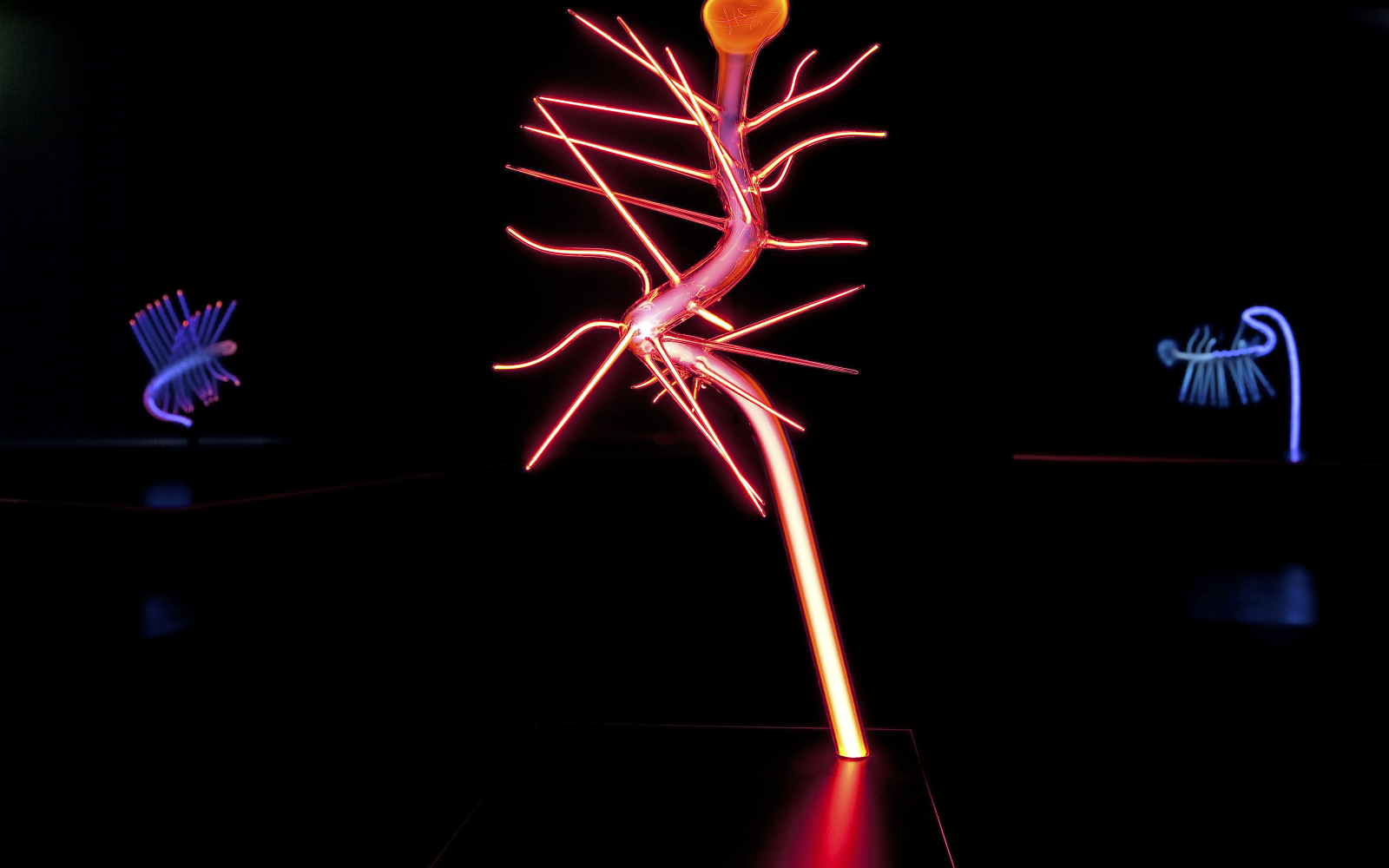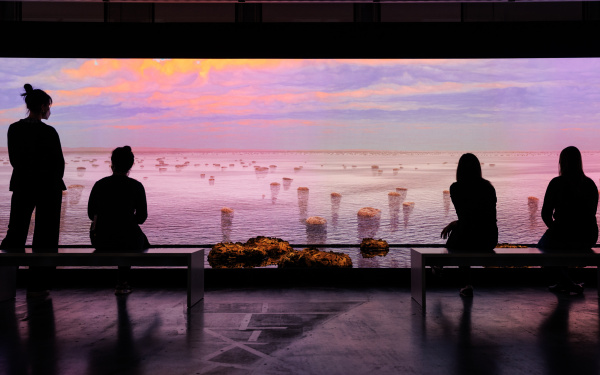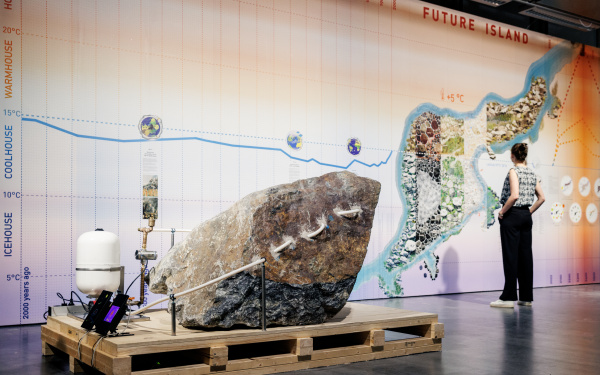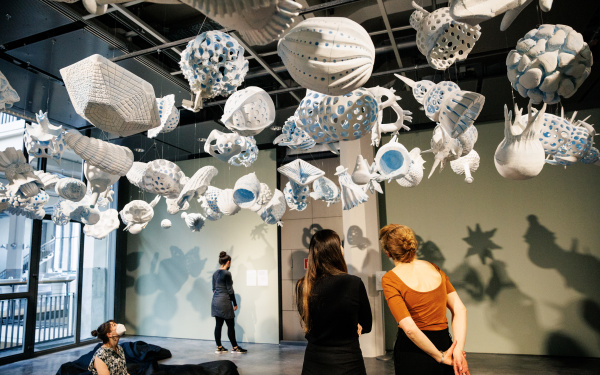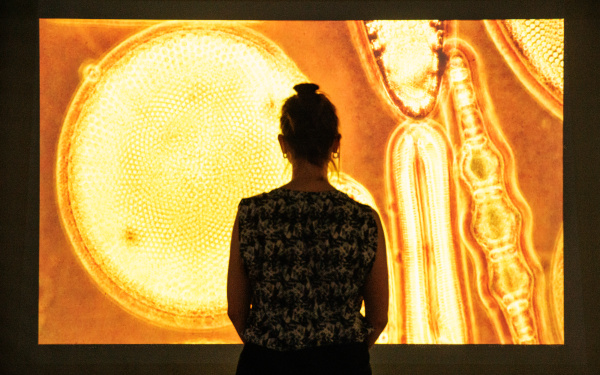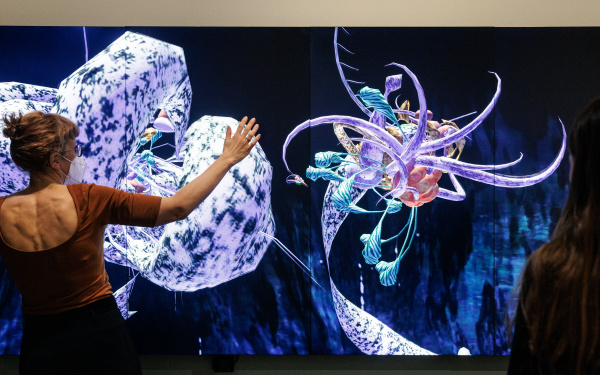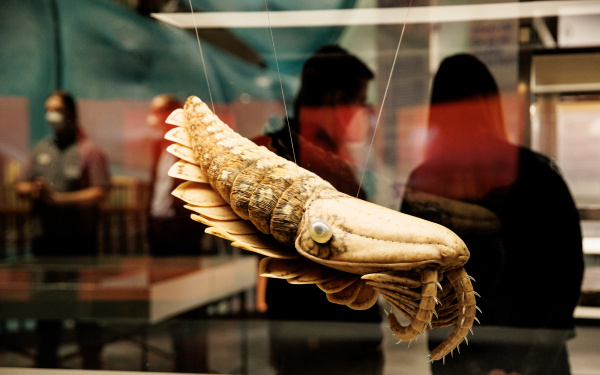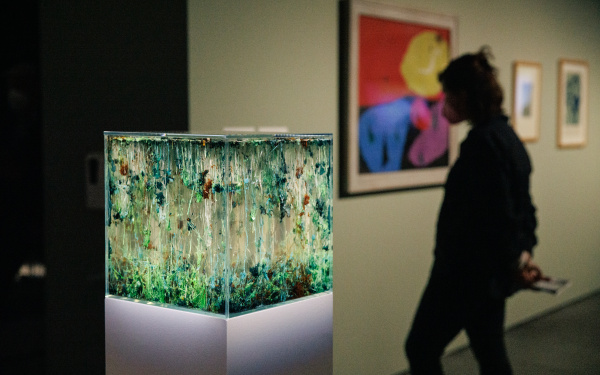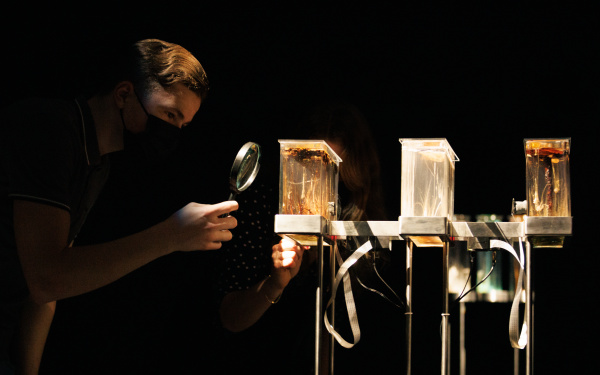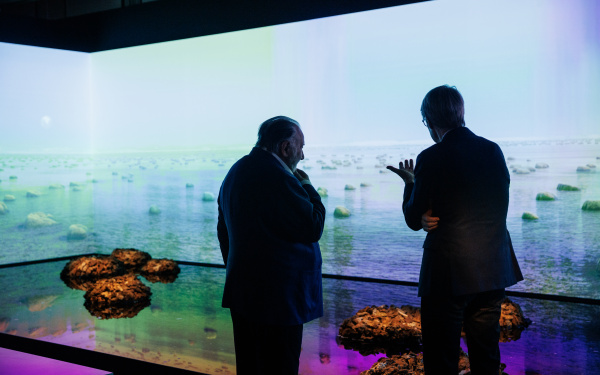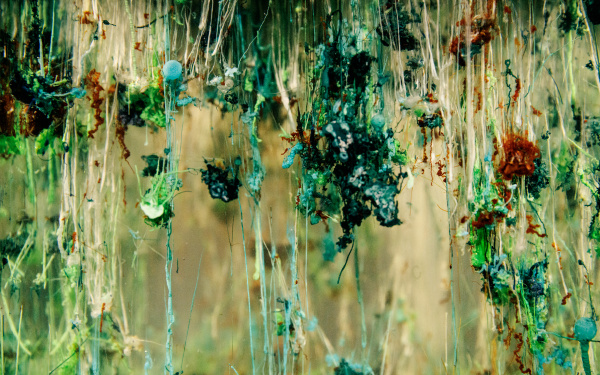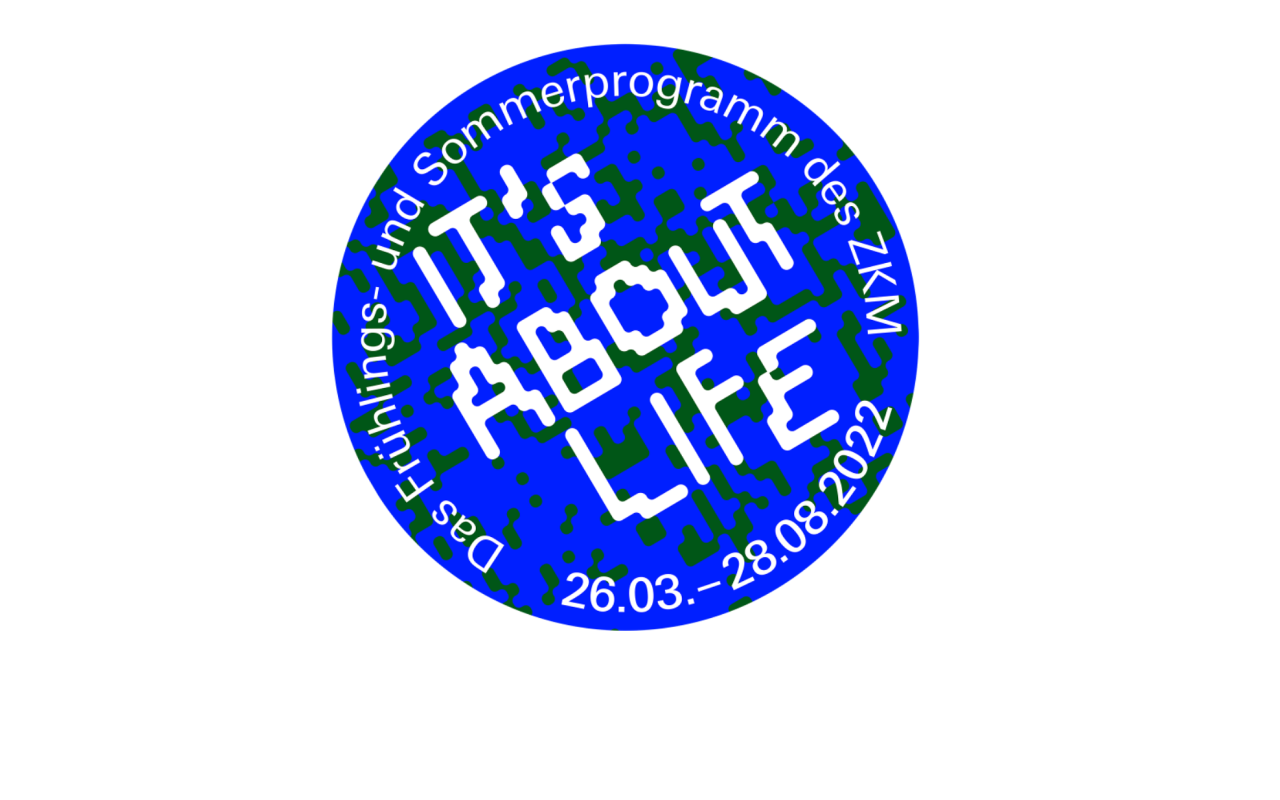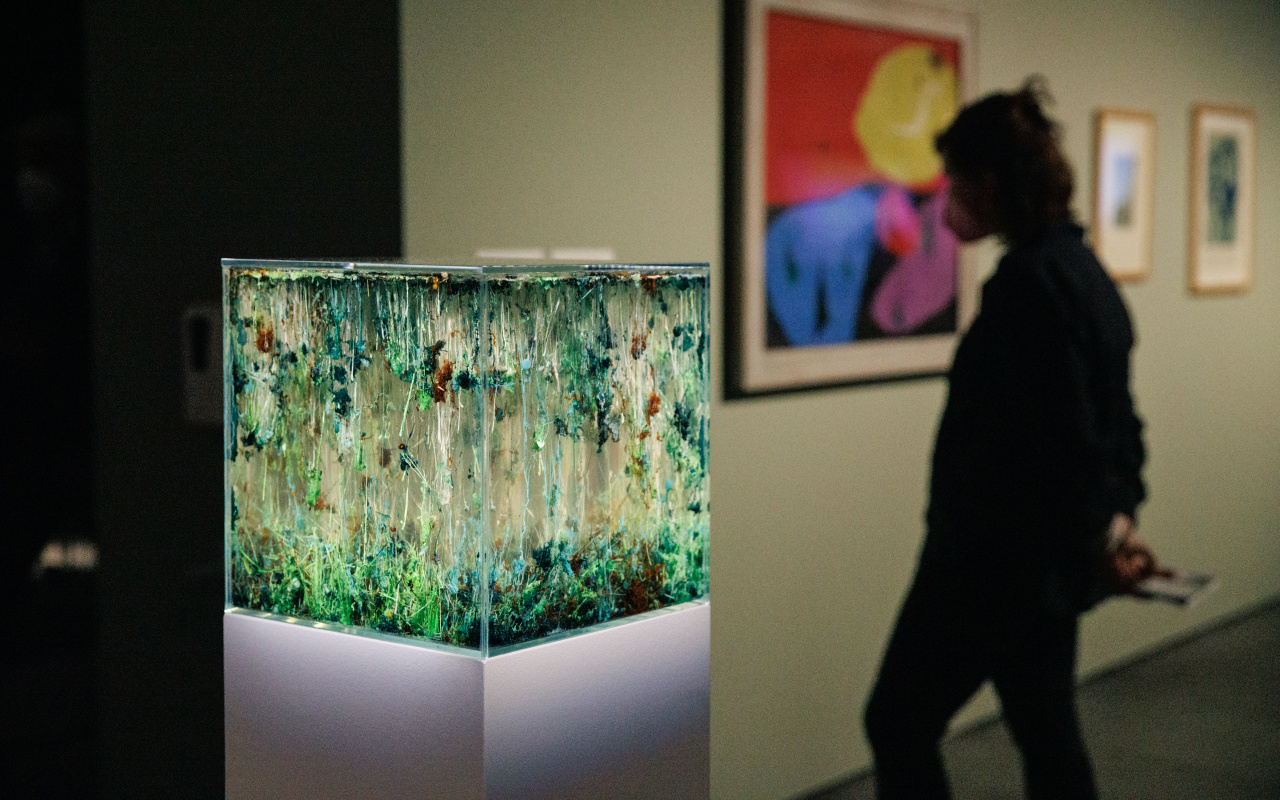- Exhibition
The Beauty of Early Life. Traces of Early Life
An exhibition in cooperation with the State Museum of Natural History Karlsruhe
Sat, March 26 – Sun, July 24, 2022
- Location
- Atrium 8+9, 1st floor
The exhibition takes us on a journey back through time to the origin of life. How did life first get started? Where can we still find traces of the earliest life forms today? Why is it important to look at the past in order to develop an understanding of why biodiversity is so relevant in today's world?
There are scientific predictions that more than one-third of all living species are threatened with extinction because of the effects of human activity. Since the very beginning of life, organisms depend on and influence one another. Living things do not exist in isolation, they live off and with each other. Therefore, we have all long been aware that life itself is threatened on planet Earth.
The exhibition invites us to look at the emergence of life through artistic works from modern times to the present, complemented by scientific exhibits from the early days of life, right now, at this crossroads of a global climate and biodiversity crisis.
The early days of life were in the Precambrian, Cambrian, and subsequent Ordovician geologic time periods; at the end of these there was a mass extinction. The exhibition thus covers the period from about 3.8 billion years ago to 444 million years Before Present (BP). The exhibition is a joint project with the State Museum of Natural History Karlsruhe. The fossils on display are evidence of the evolutionary processes described by Charles Darwin in his mid-19th century work »Origin of Species«, published in 1859. Darwin was fully aware that the geological record of the time was seriously incomplete. The oldest fossils known to Darwin came from creatures that were already highly evolved, and not from the early days of life – a »dilemma« for Darwin. Today, however, a good century and a half later, such fossils have been found, and they are presented in the exhibition. Darwin’s dilemma has largely been solved; now it is up to us to preserve the diversity of species that has arisen through evolution! By making the history of life on Earth experienceable through fossil finds and artistic works in the exhibition, the beauty and diversity of early life, hitherto barely taken note of, is showcased for the first time in a comprehensive way.
Exhibition Brochure
Exhibition Brochure
The spring and summer program at ZKM »It's about Life«
At the same time as the exhibition, the ZKM is offering »It's about Life«, an extensive educational and accompanying program on the subject of biophilia, that is sponsored by the Ministry of Science, Research and the Arts of Baden-Württemberg within the framework of »Culture despite Corona«.
Bibliographies accompanying the exhibition
Detailed bibliography on the exhibition "The Beauty of Early Life. Traces of Early Life", compiled from the holdings of the ZKM library.
Curatorial Team
- Curator
- Curator
- Co-Curator
- Co-Curator
- Co-Curator
Exhibition Team
Dennis Grabow
Michaela Spiske
Ozan Türkyilmaz
Beatrice Zaidenberg
Technical project management
Anne Däuper
Andrea Hartinger
Scientific support
Andrew H. Knoll (Harvard University)
James W. Schopf (UCLA)
Volker Storch (Universität Heidelberg)
Helmut Tischlinger (Stammham)
